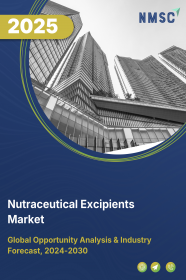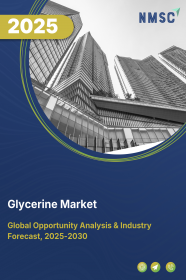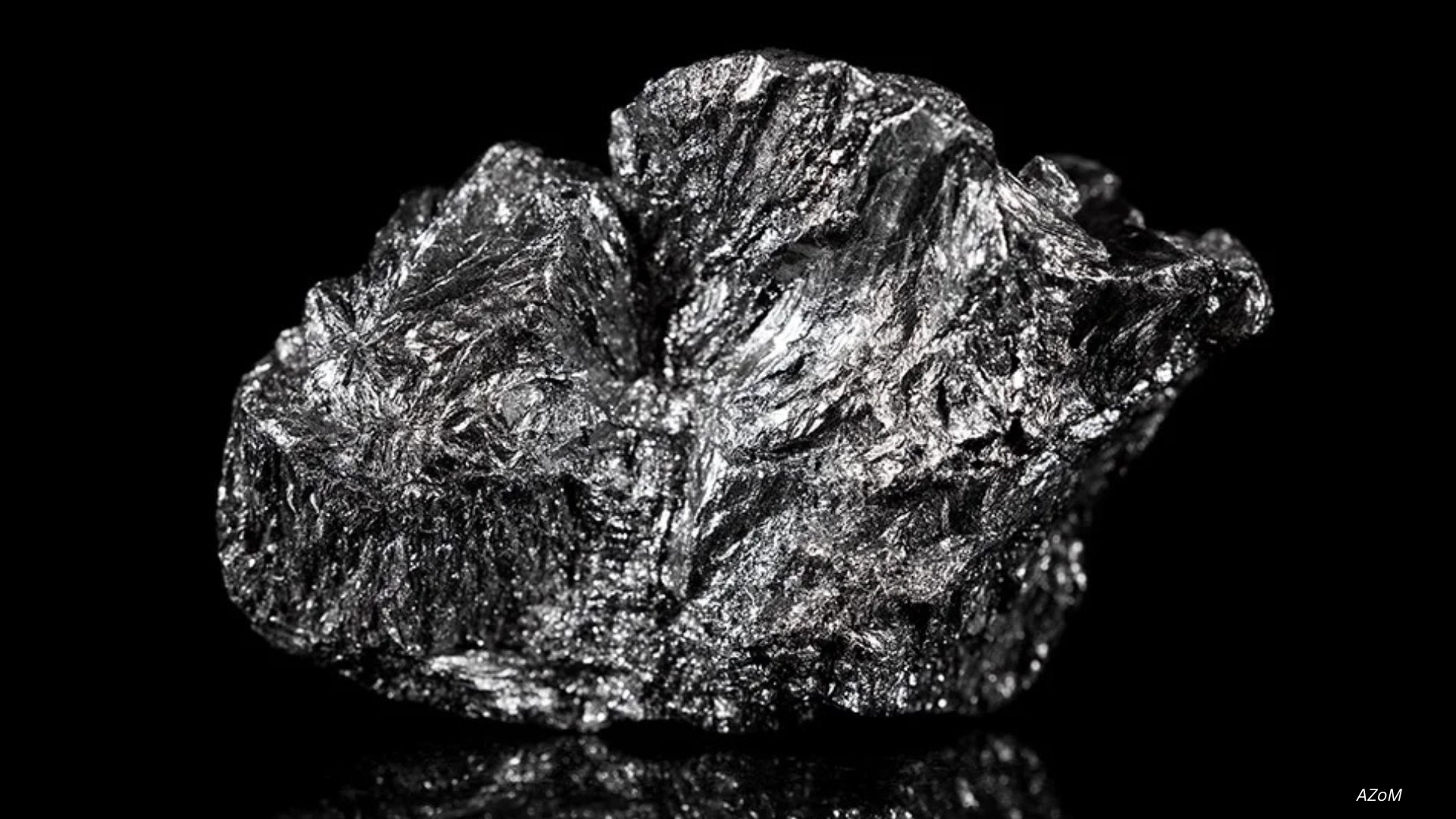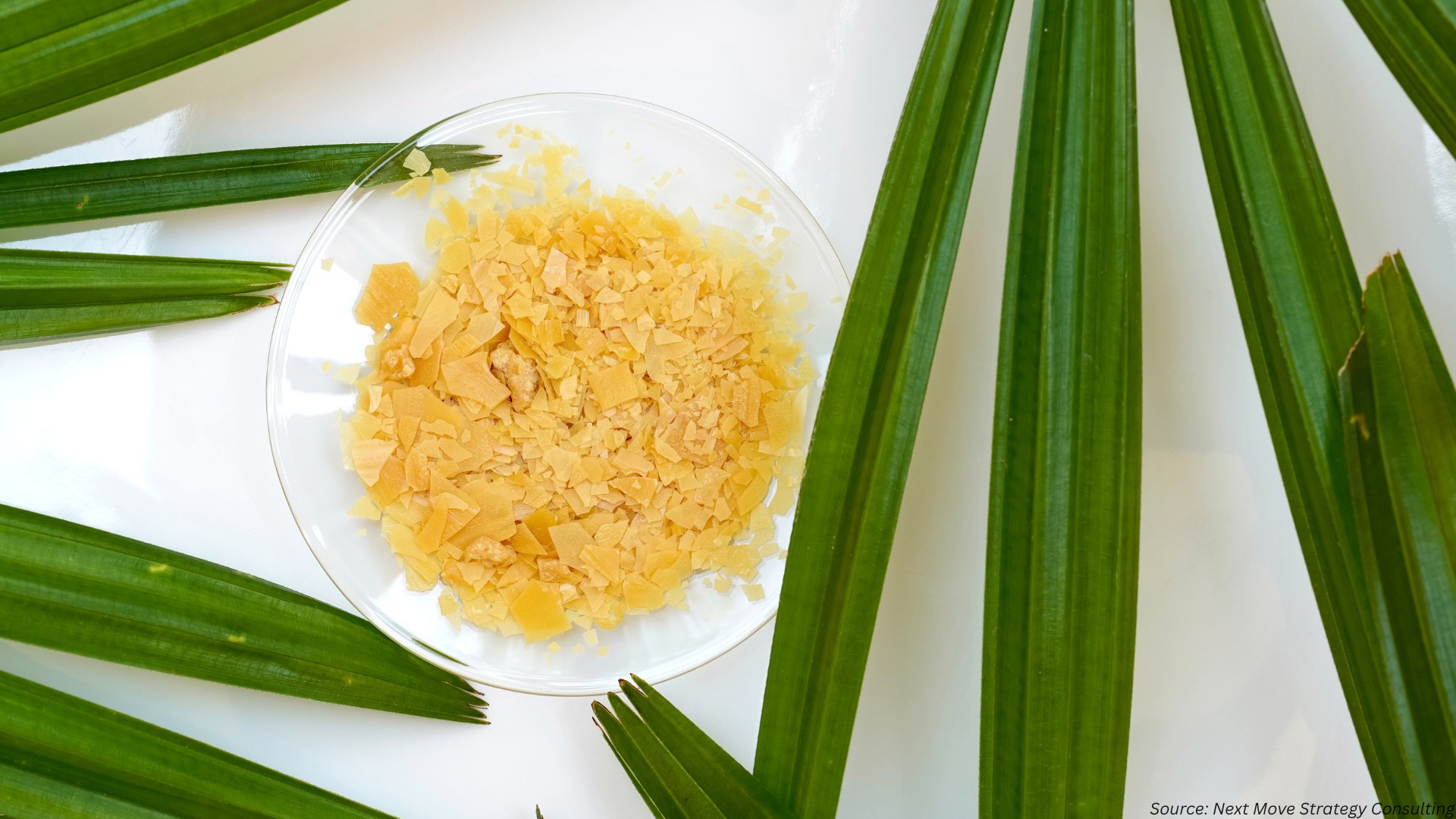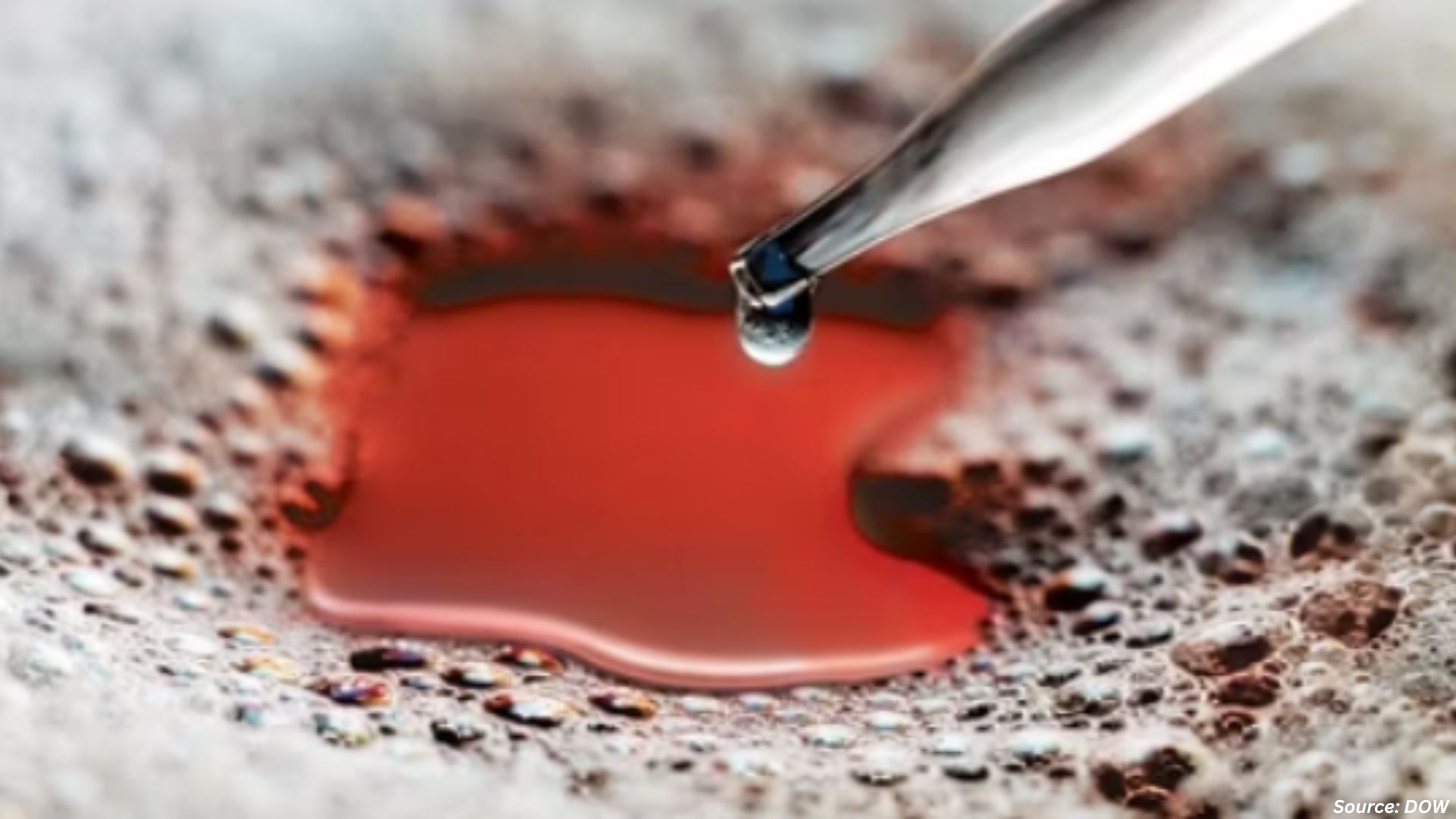
Acrylic Acid Market by Type (Glacial Acrylic Acid, Acrylic Acid Esters, and Acrylic Polymers), by Raw Material Source (Propylene and Bio-based), by Grade (Technical Grade, Glacial Grade, and Others), by Application (Surface Coatings, Adhesives and Sealants, and Others), and by End-User (Healthcare, Personal Care and Hygiene, Building and Infrastructure, Textile Industry, Water Treatment and Others) – Global Opportunity Analysis and Industry Forecast, 2025–2030
Industry Overview
The global Acrylic Acid Market size was valued at USD 12.96 billion in 2024 and is predicted to reach USD 13.53 billion by the end of 2025. The industry is predicted to reach USD 16.80 billion by 2030 with a CAGR of 4.4% from 2025 to 2030. The market is experiencing strong growth, primarily driven by rising demand from the personal care, construction, and textile industries.
In personal care, the widespread use of superabsorbent polymers in hygiene products is boosting acrylic acid consumption. The construction sector also contributes significantly, leveraging acrylic-based materials for durable and weather-resistant coatings and sealants. Additionally, the growing textile industry relies on acrylic derivatives to enhance fabric performance and quality.
However, the market faces restraint from the availability of alternative materials that offer comparable functionality at lower costs. Despite this challenge, the increasing global shift toward sustainability presents a promising opportunity for the development and adoption of bio-based acrylic acid solutions.
Booming Personal Care Sector Drives Acrylic Acid Demand in Superabsorbent Applications
The expanding global personal care sector is significantly fueling the acrylic acid market demand. Acrylic acid, a key raw material for superabsorbent polymers, is widely used in manufacturing products such as baby diapers, adult incontinence items, and feminine hygiene products due to its exceptional liquid retention properties. This rising demand for hygiene solutions directly boosts the consumption of acrylic-based materials.
According to the Personal Care Products Council, the U.S. personal care products industry alone supported 4.6 million direct and indirect jobs in 2022, contributed $308.7 billion to the nation’s GDP, and generated over $82.3 billion in tax revenues, highlighting the sector’s substantial economic footprint and its influence on the acrylic acid value chain.
Surging Construction Activities Fuel Demand for Acrylic-Based Building Materials
The global boom in construction is a key catalyst for the acrylic acid market growth. Acrylic compounds are widely used in the sector for producing high-performance architectural coatings, sealants, adhesives, waterproofing materials, and decorative acrylic sheets due to their weather resistance, durability, and aesthetic appeal.
As infrastructure development and urbanization accelerate worldwide, the demand for such advanced building materials is on the rise. According to NMSC, the global construction market is valued at USD 11.39 trillion in 2024 and is projected to reach USD 12.34 trillion by 2025. This growth momentum is expected to continue, with the market forecasted to hit USD 16.11 trillion by 2030, growing at a CAGR of 5.5% from 2025 to 2030. This robust expansion underscores the increasing consumption of acrylic-based products in the construction industry which ultimately boost the growth of the market.
Growing Textile Industry Boost the Market Growth
The increasing demand for high-performance textiles is propelling the market expansion for acrylic acid globally, as acrylic-based derivatives are widely used to enhance fabric strength, softness, and color retention key attributes in premium and durable fabrics. This upward trend is further reinforced by government initiatives aimed at strengthening the textile supply chain.
As part of India’s Union Budget 2025–26, the government launched a five-year Cotton Mission with an allocation of USD 72 million to boost the country’s cotton sector. The mission focuses on enhancing productivity of extra-long staple (ELS) cotton by supporting farmers through scientific practices and sustainable agronomy.
By ensuring a stable supply of high-quality cotton, reducing import dependency, and improving farmer incomes, this initiative supports the long-term growth of the textile market thereby increasing demand for acrylic-based fabric treatment solutions.
Presence of Alternative Materials Hinder the Growth of Acrylic Acid Demand
The presence of alternative materials significantly impedes the growth of the market by offering competitive solutions that are more cost-effective or readily available. Specifically, for the industry, the existence of substitutes such as alkyl acrylates, styrene, and vinyl acetate presents a notable challenge.
The Increasing Shift Towards Sustainability Creates Future Market Opportunity
The global push for sustainability is driving firms to develop green and biodegradable acrylic acid products. This trend creates significant market opportunities in the coming years. A March 2025 report in Green Chemistry (RSC Publishing) demonstrates this shift, showcasing a breakthrough hydrogen-free, heterogeneous catalytic process for producing bio-based acrylic acid and esters directly from glyceric acid.
This method utilizes a rhenium-catalyzed deoxydehydration process where alcohol functions as both the solvent and reducing agent, achieving high yields. This breakthrough aligns with circular economy principles, offering manufacturers eco-conscious alternatives while expanding the market potential for bio-based acrylics.
Market Segmentations and Scope of the Study
The acrylic acid market report is segmented on the basis of type, raw material source, grade, application, end-user, and region. On the basis of type, the market is divided into glacial acrylic acid, acrylic acid esters, and acrylic polymers. Acrylic acid esters are further categorized into methyl acrylate, butyl acrylate and others, while acrylic polymers include water treatment polymers, superabsorbent polymers, and acrylic elastomers. Based on the raw material source, the market is segmented into propylene and bio-based acrylic acid. By grade, it is classified into technical grade, glacial grade, and others. Based on application, the market is segmented into surface coatings, adhesives and sealants, and others. On the basis of end-user, the market is categorized into healthcare, personal care and hygiene, building and infrastructure, textile industry, water treatment, and others. Regional breakdown and analysis of each of the aforementioned segments include North America, Europe, Asia-Pacific, and Rest of the World (RoW).
Geographical Analysis
A key driver of the acrylic acid market share in North America is the rising demand from the construction industry, which relies heavily on acrylic materials for paints, adhesives, sealants, and coatings used in building projects. According to the U.S. Census Bureau’s April 2025 report, construction spending reached $660.2 billion in the first four months of the year, marking a 1.4% increase from the same period in 2024.
Acrylic acid and its derivatives are commonly used in construction products like sealants, adhesives and coatings materials. With continued infrastructure development and renovation activities, the demand for these materials is expected to grow, further supporting the expansion of the market in the region.
The steadily aging population across Europe is significantly contributing to the expansion of the industry. As the proportion of elderly individuals rises, so does the demand for hygiene and personal care products particularly those containing superabsorbent polymers, which are a key application of acrylic acid. These materials are widely used in adult incontinence products, reflecting a strong and consistent market pull. According to Eurostat, the EU’s population reached approximately 449.3 million in 2024, with over 21.6% aged 65 years or older, highlighting the long-term demand trajectory for acrylic acid-based products in the region.
The Asia-Pacific region serves as a primary force in the global industry for acrylic acid, with growth primarily driven by the rapid expansion of its paints and coatings industry. Acrylic acid plays a critical role in the formulation of high-performance coatings that comply with stringent consumer expectations and regulatory requirements, particularly within the construction, automotive, and textile manufacturing industries.
A 2024 report released by the Press Information Bureau (PIB) of India highlights the continued significance of the country’s textile and clothing industry as a vital contributor to the national economy. The sector accounted for 2.3 percent of India’s Gross Domestic Product (GDP), contributed 13 % to industrial production, and achieved export earnings of USD 34.4 billion during the fiscal year 2023–24.
Notably, apparel constituted 42 %of these exports, where the application of acrylic-based coatings is becoming increasingly prominent. As a result, the expanding use of acrylic acid derivatives in industrial textile applications reflects a broader trend across the Asia-Pacific region, where rising demand from key manufacturing sectors continues to drive growth in the industry.
Furthermore, in the ROW region the industry is gaining momentum due to rapid industrialization and sector-specific expansions. In Latin America, the growing automotive industry, particularly in countries including Brazil is increasing the demand for paints, coatings, and adhesives, which are key applications of acrylic acid.
Meanwhile, the Middle East is witnessing robust industrial expansion driven by large-scale infrastructure projects and diversification efforts beyond oil. This industrial growth fuels the consumption of acrylic acid in construction chemicals, adhesives, and performance polymers, which are critical for durable and high-performance construction applications.
Strategic Innovations Adopted by Key Players
Key players in the acrylic acid industry are actively deploying strategic partnerships, advanced technology integration, and product diversification to strengthen their market share and meet evolving healthcare demands.
-
Nippon Shokubai Co., Ltd. announced in July 2024 that its Board of Directors approved an investment plan for its Indonesian subsidiary, PT. Nippon Shokubai Indonesia (NSI), to construct a new superabsorbent polymer (SAP) production facility with an annual capacity of 50,000 metric tons. This expansion builds on significant prior investments in acrylic acid production, reinforcing the company’s manufacturing strategy.
-
In 2024, LG Chem launched prototype production of 100% bio-acrylic acid, certified under the USDA BioPreferred program. Subsequently, this innovative material produced from 3-hydroxypropionic acid (3HP) through microbial fermentation delivers performance equivalent to its conventional counterpart while offering a sustainable alternative for use in cosmetics and diaper materials. The initial production capacity is 100 metric tons per year, with plans for expansion based on market demand.
-
In June 2024, Dow announced the acquisition of Circulus Holdings, LLC, a U.S.-based mechanical recycling company specializing in the conversion of plastic waste into post-consumer resin. The acquisition includes two operational facilities in the United States with a combined annual recycling capacity of 50,000 metric tons. This strategic move strengthens Dow’s commitment to its Transform the Waste initiative and supports its broader sustainability goals.
Key Benefits
-
The report provides quantitative analysis and estimations of the sector from 2025 to 2030, which assists in identifying the prevailing market opportunities.
-
The study comprises a deep-dive analysis of the current and future acrylic acid market trends to depict prevalent investment pockets in the industry.
-
Information related to key drivers, restraints, and opportunities and their impact on the market is provided in the report.
-
Competitive analysis of the key players, along with their market share is provided in the report.
-
SWOT analysis and Porters Five Forces model is elaborated in the study.
-
Value chain analysis in the market study provides a clear picture of roles of stakeholders.
Acrylic Acid Market Key Segments
By Type
-
Glacial Acrylic Acid
-
Acrylic Acid Esters
-
Methyl Acrylate
-
Butyl Acrylate
-
Ethyl Acrylate
-
2-Ethylhexyl Acrylate
-
-
Acrylic Polymers
-
Water Treatment Polymers
-
Superabsorbent Polymer
-
Acrylic Elastomers
-
By Source
-
Propylene
-
Bio-based
By Grade
-
Technical Grade
-
Glacial Grade
-
Polymer Grade
-
Reagent Grade
By Application
-
Surface Coatings
-
Adhesives & Sealants
-
Garments
-
Plastics & Polymers
-
Electronics
-
Sanitary Products
-
Surfactants
-
Textiles
By End-User
-
Healthcare
-
Personal Care & Hygiene
-
Building and Infrastructure
-
Textile Industry
-
Water Treatment
-
Automotive
-
Packaging
-
Agriculture
-
Detergents & Household Products
By Region
-
North America
-
The U.S.
-
Canada
-
Mexico
-
-
Europe
-
The U.K.
-
Germany
-
France
-
Italy
-
Spain
-
Denmark
-
Netherlands
-
Finland
-
Sweden
-
Norway
-
Russia
-
Rest of Europe
-
-
Asia-Pacific
-
China
-
Japan
-
India
-
South Korea
-
Australia
-
Indonesia
-
Singapore
-
Taiwan
-
Thailand
-
Rest of Asia-Pacific
-
-
Rest of the World (RoW)
-
Latin America
-
Middle East
-
Africa
-
Key Players
-
BASF SE
-
Arkema S.A.
-
Nippon Shokubai
-
LG Chem
-
Dow Chemica
-
Evonik
-
Mitsubishi Chemical
-
Sasol
-
Wanhua Chemical
-
Sibur
-
Shanghai Huayi Acrylic Acid Co., Ltd.
-
Satellite Chemical Co., Ltd.
-
Toagosei Co., Ltd.
-
Polysciences Inc
-
Maxwell Additives Pvt. Ltd
Report Scope and Segmentation
|
Parameters |
Details |
|
Market Size in 2025 |
USD 13.53 Billion |
|
Revenue Forecast in 2030 |
USD 16.80 Billion |
|
Growth Rate |
CAGR of 4.4% 2025 to 2030 |
|
Analysis Period |
2024–2030 |
|
Base Year Considered |
2024 |
|
Forecast Period |
2025–2030 |
|
Market Size Estimation |
Billion (USD) |
|
Growth Factors |
|
|
Countries Covered |
28 |
|
Companies Profiled |
15 |
|
Market Share |
Available for 10 companies |
|
Customization Scope |
Free customization (equivalent to up to 80 working hours of analysts) after purchase. Addition or alteration to country, regional, and segment scope. |
|
Pricing and Purchase Options |
Avail customized purchase options to meet your exact research needs. |

















 Speak to Our Analyst
Speak to Our Analyst




